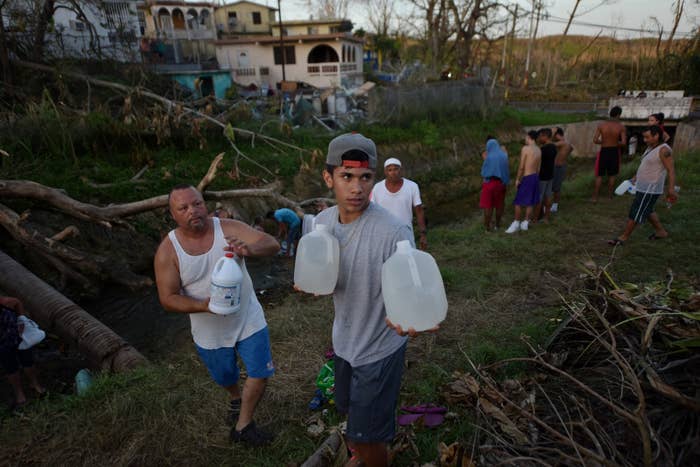
Almost 1.5 million people lacking drinking water and infrastructure remained crippled Tuesday in Puerto Rico as the devastation from Hurricane Maria created a humanitarian crisis on the island.
The Department of Defense outlined the harrowing situation in the US territory, which was slammed last week by the Category 4 hurricane. Roughly 44% of the island's 3.4 million people were without potable water Tuesday, a Defense Department report stated, and the local power grid suffered damage to "80% of the transmission system and 100% of the distribution system."
The report also revealed that only 11 of 69 hospitals had power or generator fuel. San Juan Mayor Carmen Yulín Cruz told CNN that two people who were in an intensive care unit had already died after the hospital ran out of diesel.
Domingo Cruz Vivaldi, executive director of San Jorge Children's Hospital in San Juan, told CNN that his facility was facing a "crisis right now" over fuel.
"The hospital is needing diesel every day — 2,000 gallons a day," he said. "Yesterday, we ran out of diesel at 6 a.m. and we were without electricity at the hospital from 6 a.m. through 2 p.m. Eight hours without electricity."
According to the Associated Press, grocery stores were gradually reopening, but food and water remained scarce in some locations.
The Defense Department said officials were making some progress on the island. Crews were working Tuesday to restore power to hospitals using generators, and eight airports on the island including San Juan International were either open or operating with some restrictions.
In addition, a dam that had menaced the island with a potential rupture was "intact but in need of reinforcement to ensure stability," according to the Defense Department.
FEMA administrator Brock Long said at a news conference Tuesday that the USNS Comfort, a hospital ship that can be deployed to assist troops or for relief during disasters, was being deployed to Puerto Rico. On Sunday, Hillary Clinton had called on President Trump to send the Comfort to the island.
Crews were also working to restore water and power on the US Virgin Islands, including at a water production facility on St. Croix that was operating Tuesday. Airports in both St. Croix and St. Thomas were open for recovery operations only.

Long said at the news conference that FEMA currently has 6 million liters of water already in Puerto Rico, but it was not immediately clear how the agency planned to distribute that water to the island's population. Puerto Rico Gov. Ricardo Rossello tweeted Tuesday that the National Guard was touring the island and helping distribute water.
Long said the devastation on Puerto Rico was on a scale the US had not seen "in a very, very long time, if ever."
"You have to remember, not only did Irma come through and create quite a bit of damage and destruction that we were working to repair, but Maria was one mile away from being a Category 5 storm, one of the strongest storms that Puerto Rico has ever seen since the 20s," Long said. "And let’s face it, the infrastructure is weak and there were no building codes. So there’s a lot of devastation.”

